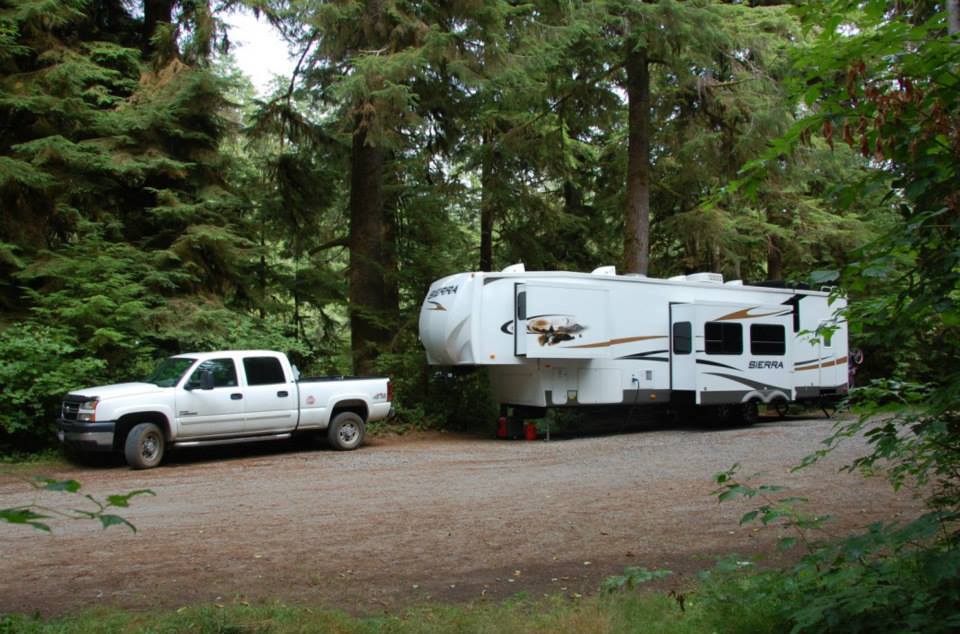
10 Ecotourism Destinations In USA
The United States offers a wide range of ecotourism destinations that showcase its diverse natural landscapes and wildlife.
Here are some popular ecotourism destinations in the USA:
1. Denali National Park, Alaska
Denali National Park and Preserve is a national park located in the interior of Alaska, United States. It is named after Denali, the highest peak in North America, formerly known as Mount McKinley. The park encompasses an area of over 6 million acres (2.4 million hectares) and is characterized by its rugged mountain ranges, vast tundra, glaciers, and diverse wildlife.
Here are some key points about Denali National Park:
- Wildlife: The park is home to a wide range of wildlife species, including grizzly bears, moose, caribou, Dall sheep, wolves, and foxes. It is particularly known for its population of Alaskan sled dogs. The park is committed to preserving these animals and their natural habitats.
- Mount Denali: The park’s centerpiece is Mount Denali, standing at an impressive height of 20,310 feet (6,190 meters). It is one of the world’s most sought-after climbing destinations, attracting experienced mountaineers from around the globe. The mountain’s massive size and striking beauty are a major draw for visitors to the park.
- Visitor Experience: Denali National Park offers a variety of recreational opportunities for visitors. There is a single road, the Denali Park Road, that stretches for approximately 92 miles (148 kilometers) into the park. Private vehicles are only permitted to drive the first 15 miles (24 kilometers), and beyond that, visitors can access the park via shuttle buses or tour buses. The park provides an excellent setting for hiking, camping, backpacking, wildlife viewing, and photography.
- Wilderness: Denali National Park is known for its vast wilderness areas, providing a pristine and untouched natural environment. Most of the park’s backcountry is designated as wilderness, offering opportunities for adventurous hikers and backpackers to explore remote areas. The park’s landscapes range from towering mountains and glaciers to expansive tundra and raging rivers.
- Cultural Heritage: The park is also home to several archaeological sites and cultural artifacts that reflect the history and heritage of indigenous Athabascan people. Denali National Park recognizes and honors the traditions and contributions of these Native Alaskan communities.
It’s important to note that Denali National Park is a protected area, and visitors are encouraged to follow the park’s regulations and guidelines to ensure the preservation of its natural and cultural resources.
2. Olympic National Park, Washington
Olympic National Park is a diverse and stunning national park located in the state of Washington, in the northwestern United States. It encompasses a vast area of over 922,000 acres (3,733 square kilometers) and offers a wide range of ecosystems, including rugged coastlines, temperate rainforests, alpine meadows, and glacier-capped mountains.
Here are some key features and highlights of Olympic National Park:
- Mountains: The park is home to the Olympic Mountains, which include Mount Olympus, the highest peak in the park at 7,980 feet (2,432 meters). The mountain range offers breathtaking vistas, pristine alpine environments, and opportunities for hiking and climbing.
- Rainforests: Olympic National Park is renowned for its temperate rainforests, including the Hoh Rainforest and the Quinault Rainforest. These lush, moss-draped forests receive heavy rainfall and are characterized by towering old-growth trees, such as Sitka spruce and Western red cedar.
- Coastline: The park features a rugged and picturesque coastline along the Pacific Ocean. The beaches are known for their wild beauty, sea stacks, tide pools, and opportunities for beachcombing, birdwatching, and storm watching.
- Wildlife: Olympic National Park is home to a diverse array of wildlife species. Visitors may encounter elk, black bears, mountain goats, bobcats, cougars, and a variety of bird species. The park also supports several species of salmon, including the threatened chinook and coho salmon.
- Outdoor Recreation: The park offers numerous recreational activities, including hiking, camping, backpacking, fishing, kayaking, wildlife viewing, and birding. There are various trails of different lengths and difficulties that cater to different skill levels.
- Sol Duc Hot Springs: Located within the park, the Sol Duc Hot Springs is a popular destination for relaxation. It features mineral-rich hot pools and offers services such as hot spring soaking, massages, and accommodations.
- Lake Crescent: Lake Crescent is a pristine glacial lake known for its clear blue waters. It offers opportunities for boating, fishing, swimming, and scenic drives around its shores.
- Visitor Centers: Olympic National Park has visitor centers at different locations, including the Olympic National Park Visitor Center in Port Angeles, the Hoh Rainforest Visitor Center, and the Hurricane Ridge Visitor Center. These centers provide information, exhibits, and educational programs to enhance visitors’ understanding and enjoyment of the park.
It’s important to note that due to the vast size of the park and the varying ecosystems, it is recommended to plan your visit in advance and consider the time of year and weather conditions for the specific activities you are interested in.
3. Everglades National Park, Florida

The Everglades National Park is a vast subtropical wilderness area located in the southern part of the U.S. state of Florida. It covers an area of approximately 1.5 million acres (6,070 square kilometers) and is recognized as one of the most significant and diverse ecosystems in the world.
The park is known for its unique landscape, which consists of wetlands, swamps, sawgrass marshes, and mangrove forests. It is home to a wide range of plant and animal species, many of which are rare or endangered. The Everglades is particularly famous for its population of American alligators, which can be observed throughout the park.
The Everglades is also a designated UNESCO World Heritage site and an International Biosphere Reserve. It attracts millions of visitors each year who come to experience its natural beauty and engage in various recreational activities such as birdwatching, fishing, boating, and hiking. There are multiple visitor centers and nature trails within the park that provide opportunities for exploration and education about the unique ecosystem.
However, the Everglades faces significant environmental challenges, including habitat loss, water pollution, and invasive species. Efforts are being made to restore and protect the park through various conservation initiatives and collaborations with governmental and non-governmental organizations.
Overall, the Everglades National Park is a remarkable natural treasure in the United States, showcasing the importance of preserving and appreciating diverse ecosystems and the biodiversity they support.
4. Yellowstone National Park, Wyoming, Montana, Idaho

Yellowstone National Park is a vast national park located primarily in the U.S. state of Wyoming, although it also extends into Montana and Idaho. Established on March 1, 1872, it was the first national park in the United States and is widely considered the first national park in the world. Yellowstone spans an area of approximately 2.2 million acres (8,983 square kilometers) and is known for its remarkable natural features and diverse wildlife.
The park is renowned for its geothermal activity, including the famous Old Faithful geyser, which erupts approximately every 90 minutes. Yellowstone sits atop a supervolcano, and the geothermal activity manifests in the form of hot springs, mud pots, fumaroles, and other unique geologic features. The park is also home to the Yellowstone Caldera, one of the largest active volcanic systems in the world.
Yellowstone National Park is recognized for its stunning landscapes, such as the Yellowstone River, the Grand Canyon of the Yellowstone, and Yellowstone Lake, which is one of the largest high-altitude lakes in North America. The park is blessed with an array of wildlife, including grizzly bears, wolves, elk, bison, and numerous species of birds. It provides a sanctuary for these animals and serves as an important conservation area.
Visitors to Yellowstone can engage in various recreational activities, such as hiking, camping, fishing, boating, and wildlife watching. There are over 900 miles (1,449 kilometers) of hiking trails throughout the park, ranging from easy walks to challenging multi-day treks. The park also offers opportunities for winter activities, such as cross-country skiing and snowmobiling.
Yellowstone National Park holds significant cultural and historical value as well. It has a rich Native American history, with several tribes having longstanding connections to the land. The park also preserves the heritage of early European American explorers and pioneers who played a role in its discovery and subsequent protection.
5. Big Sur, California
Big Sur is a region located on the central coast of California, United States. It is known for its stunning coastline, rugged mountains, and beautiful natural scenery. Big Sur stretches for approximately 90 miles (145 kilometers) along the Pacific Ocean, between Carmel Highlands in Monterey County to San Simeon in San Luis Obispo County.
The area is characterized by its dramatic cliffs, pristine beaches, dense forests, and diverse wildlife. It is a popular destination for outdoor enthusiasts, nature lovers, and tourists looking to enjoy the beauty of the California coastline. Some of the prominent features of Big Sur include Bixby Creek Bridge, McWay Falls, Pfeiffer Beach, and Point Sur Lighthouse.
Big Sur is also home to several state parks and natural reserves, including Julia Pfeiffer Burns State Park, Andrew Molera State Park, and Pfeiffer Big Sur State Park. These parks offer various recreational activities such as hiking, camping, picnicking, and wildlife viewing.
The region is known for its scenic drives, especially along the Pacific Coast Highway (Highway 1), which winds through Big Sur and offers breathtaking views of the ocean and the rugged landscape. The highway is famous for its iconic bridges and hairpin turns, providing a memorable driving experience.
In addition to its natural beauty, Big Sur is home to several art galleries, boutique hotels, and restaurants that cater to visitors. The community in Big Sur is small and close-knit, with an emphasis on preserving the natural environment and maintaining a peaceful atmosphere.
It’s important to note that due to its remote location and challenging terrain, Big Sur can be subject to road closures and limited services, especially during winter months or after heavy rainstorms. Therefore, it’s advisable to check road conditions and plan ahead before visiting the area.
Overall, Big Sur is a breathtaking destination that offers a unique combination of natural wonders, outdoor activities, and a tranquil environment, making it a must-visit place for those exploring the beauty of California’s central coast.
READ ALSO; 7 Ecotourism Destinations In Costa Rica
6. Great Smoky Mountains National Park, Tennessee, North Carolina
Great Smoky Mountains National Park is a renowned national park located in the southeastern United States, primarily in the states of Tennessee and North Carolina. Established in 1934, it covers an area of over 816 square miles (2,114 square kilometers) and is renowned for its breathtaking beauty, diverse wildlife, and rich cultural heritage.
Here are some key features and highlights of Great Smoky Mountains National Park:
- Scenic Beauty: The park is famous for its stunning natural landscapes, including lush forests, cascading waterfalls, and mist-covered mountains. It is home to the Great Smoky Mountains, a subrange of the Appalachian Mountains, which provide a dramatic backdrop throughout the park.
- Biodiversity: Great Smoky Mountains National Park is recognized as an International Biosphere Reserve and a UNESCO World Heritage site. It boasts an incredible diversity of plant and animal species, with over 19,000 documented species identified so far, including black bears, white-tailed deer, wild turkeys, and more. The park is especially known for its synchronous firefly displays, where thousands of fireflies light up simultaneously in a mesmerizing natural phenomenon.
- Hiking and Outdoor Activities: The park offers an extensive network of hiking trails, ranging from easy strolls to challenging treks. Popular trails include the Appalachian Trail, which passes through the park, and the Clingmans Dome Trail, leading to the highest peak in the park. Other activities include camping, fishing, horseback riding, and wildlife watching.
- Cades Cove: Cades Cove is a scenic valley within the park, known for its historic buildings, including churches, log cabins, and grist mills. Visitors can explore the area by car, bicycle, or on foot, enjoying the picturesque landscapes and the chance to spot wildlife.
- Cultural Heritage: The park preserves the history and heritage of the region’s early settlers and indigenous peoples. Various historic structures, such as homesteads and farmsteads, offer insights into the lives of those who once inhabited the area. The Mountain Farm Museum near the Oconaluftee Visitor Center showcases traditional Appalachian farm buildings.
- Fall Foliage: Great Smoky Mountains National Park is renowned for its vibrant autumn foliage. During the fall season, the park’s forests transform into a breathtaking display of colors, attracting numerous visitors who come to witness this natural spectacle.
- Visitor Centers and Educational Programs: The park has several visitor centers that provide information, exhibits, and educational programs about the park’s natural and cultural resources. These centers are excellent starting points for learning about the park’s history, geology, and ecology.
Great Smoky Mountains National Park is one of the most visited national parks in the United States, attracting millions of visitors each year. It offers a range of recreational opportunities, stunning scenery, and a chance to immerse oneself in the natural beauty of the Appalachian region.
7. Zion National Park, Utah
Zion National Park is characterized by its towering red cliffs, narrow canyons, and scenic hiking trails. The park offers opportunities for hiking, canyoneering, rock climbing, and camping.
8. Acadia National Park, Maine
Acadia National Park is a stunning national park located primarily on Mount Desert Island in Maine, United States. Established in 1919, it encompasses an area of approximately 49,000 acres (19,800 hectares) and includes several smaller islands along the coast.
Here are some key features and attractions of Acadia National Park:
- Mount Desert Island: The park’s largest island, Mount Desert Island, is known for its rugged coastline, granite peaks, and scenic vistas. The island is home to Cadillac Mountain, the tallest peak on the eastern coast of the United States, offering breathtaking views of the surrounding landscape.
- Park Loop Road: A 27-mile (43 km) scenic drive that provides access to many of the park’s major attractions. Along the route, you’ll find various viewpoints, hiking trails, and opportunities for wildlife viewing.
- Cadillac Mountain: As mentioned earlier, Cadillac Mountain is a popular destination within the park. It offers incredible panoramic views, especially during sunrise and sunset. In fact, Cadillac Mountain is known for being one of the first places in the United States where you can see the sunrise from October to early March.
- Jordan Pond: This picturesque pond is renowned for its crystal-clear waters and stunning reflections of the surrounding mountains. Visitors can take a leisurely walk around the pond on the Jordan Pond Path or enjoy a meal at the historic Jordan Pond House.
- Thunder Hole: A natural rock formation where waves crash into a narrow inlet, creating a thunderous sound. It’s a unique and exhilarating experience, especially during high tide.
- Hiking and Outdoor Activities: Acadia National Park offers a vast network of hiking trails suitable for all levels of experience. Popular trails include the Precipice Trail, the Beehive Trail, and the Jordan Pond Path. Additionally, the park provides opportunities for biking, camping, bird watching, fishing, boating, and rock climbing.
- Wildlife: Acadia is home to a diverse array of wildlife, including white-tailed deer, moose, foxes, porcupines, and various bird species. You may also spot seals, dolphins, and whales along the park’s coastline.
It’s important to note that Acadia National Park can get quite crowded, particularly during the peak summer months. To make the most of your visit, consider planning ahead, arriving early, and exploring some of the lesser-known areas of the park.
9. Maui, Hawaii
While not a specific national park, the island of Maui in Hawaii offers various ecotourism activities. Visitors can explore the Haleakala National Park, go snorkeling or diving to discover vibrant coral reefs, and observe humpback whales during their winter migration.
10. Hoh Rainforest, Washington

The Hoh Rainforest is located on the Olympic Peninsula in the state of Washington, United States. It is one of the most iconic and unique temperate rainforests in the country. Here’s some information about the Hoh Rainforest:
- Location: The Hoh Rainforest is situated within the boundaries of Olympic National Park, which is in the northwestern part of Washington state. It is about 150 miles (240 kilometers) west of Seattle.
- Climate: The Hoh Rainforest is known for its abundant rainfall. It receives an average annual precipitation of around 140 to 170 inches (3,500 to 4,300 millimeters). The rainforest experiences a temperate climate, with mild winters and cool summers.
- Vegetation: The Hoh Rainforest is characterized by its lush vegetation and diverse plant life. It is home to a variety of tree species, including towering Sitka spruce, western hemlock, Douglas fir, and western red cedar. The forest floor is covered with a thick layer of mosses, ferns, and other plants, creating a vibrant green carpet.
- Wildlife: The rainforest supports a rich ecosystem and is home to a wide range of wildlife. Visitors may spot Roosevelt elk, black bears, cougars, bobcats, and various bird species such as the northern spotted owl and marbled murrelet.
- Hiking Trails: The Hoh Rainforest offers several hiking trails that allow visitors to explore its beauty. The most popular trail is the Hoh River Trail, which follows the Hoh River through old-growth forest. Another notable trail is the Hall of Mosses Trail, a shorter loop that takes you through a dense moss-covered forest.
- Visitor Center: The Hoh Rainforest Visitor Center is the starting point for many visitors. It provides information about the rainforest’s ecology, history, and recreational opportunities. It also offers exhibits, maps, and restrooms.
- Camping and Accommodation: Olympic National Park provides camping options within the Hoh Rainforest area. The Hoh Campground offers tent and RV sites, and there are also primitive camping areas available. Outside the park, there are accommodations in nearby towns such as Forks and Port Angeles.
Visiting the Hoh Rainforest offers a unique opportunity to experience the beauty and serenity of a temperate rainforest. The dense vegetation, moss-covered trees, and the sound of rain create a magical atmosphere that attracts nature lovers and hikers from around the world.
These are just a few examples of the many ecotourism destinations in the United States. Each destination offers unique experiences and opportunities to appreciate and conserve the natural environment. Remember to check with local authorities and park services for the latest information on visiting these destinations.








